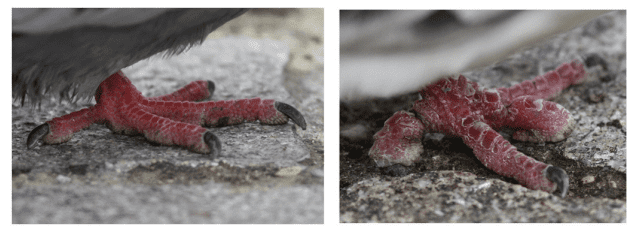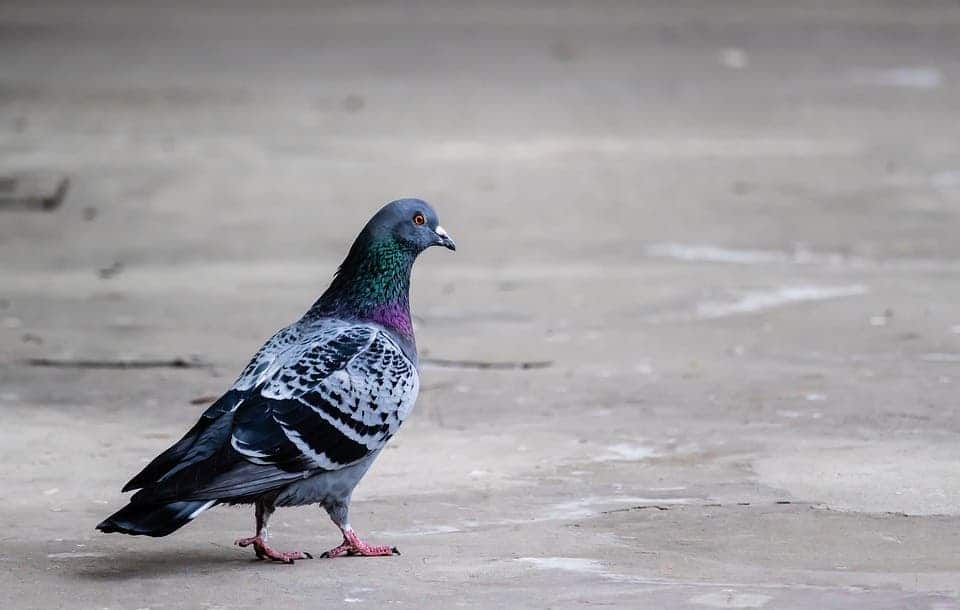
It’s rather unceremonious, but easy to understand, why pigeons are sometimes referred to as ‘rats with wings’. Just like their unrelated namesakes, pigeons have become ubiquitous in virtually all urban areas. Pigeons thrive in cities, they love most sorts of discarded food, and have almost no natural predators. It’s pretty easy to understand why they’ve become such a common sight — but life isn’t peachy for urban pigeons, either.
If you’ve ever glanced at a group of pigeons, you may have noticed a peculiar thing: their feet are often maimed — sometimes, quite gruesomely. It’s one of those things which you may not notice in the first place, but once you do, you see it everywhere. It seems that everywhere you look, a large proportion of pigeons have maimed feet, and it’s not exactly clear why. A team of researchers at the Institute of ecology and environmental sciences had the same question — so they set out to study it.
Now, they believe they’ve found a likely culprit: human hair.
“The study arose from the observation, made by birders and vets, that pigeons often carry strings on their feet, and that handicapped toes always show a sign of past strangulation,” lead author Frédéric Jiguet tells ZME Science.
It’s always hard to pinpoint the source of the damage in this type of scenario. Urban environments are among the most polluted on Earth. In between the organic waste on the streets, pollution in the water, noise, light, and permanent emissions from cars on the road, there’s no shortage of potential causes for biological damage. In fact, pollution and pigeon toe mutilation go hand in hand.

The team surveyed blocks of homogeneous habitat types, noting the degree of observed mutilation in the pigeon populations. They then analyzed a larger dataset to predict the occurrence and number of mutilation in non-juvenile pigeons, noting relevant environmental and sociodemographic factors that could be linked to the mutilation.
The team found that human pollution probably plays a role in almost all cases. Pigeons living in areas with higher rates of air and noise pollution tended to have fewer digits than those who live in greener areas. But there was another, more surprising correlation: toe mutilation tends to be more common in areas with a higher density of hairdressers. In other words, human hair might be to blame for the pigeon’s toe woes.
This is consistent with previous observations. A 2018 observation of foot and toe injury found a systematic connection to strings and/or human hair — something called ‘stringfoot’. What happens is the string or hair gets wrapped around the pigeon’s toe, where it tightens more and more. Human hair is extremely sturdy in this sort of scenario. Eventually, blood supply is cut off until necrosis causes the toe to fall off. This was also supported by observations carried out on mutilated toes, which seem to be consistent with stringfoot.
In this light, the connection to hairdressers doesn’t seem coincidental — there are more hairs that get entangled in the unfortunate birds’ feet.
Jiguet adds that although the anti-pigeon spikes that have become more and more common can do damage to birds, the spikes would injure the wings or body of the pigeons, not the toes.
“Urbanization is intensifying worldwide, and little is known about
how changes in urban landscapes influence wildlife health in cities,” the study authors write.“The growing recognition of the value of urban wildlife for human well-being requires the protection of wildlife health as well as human health”
The study “Urban pigeons losing toes due to human activities” has been published in the journal Biological Conservation.


